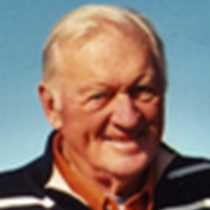Eastern Oregon & Washington
Navigating the great Columbia River aboard the Sea Lion – today’s task – may sound mundane and ordinary. However, add the sun’s rays, wind-whipped white caps, riverside basalt sculpture, verdant hillside vineyards, and you have a story to tell. Among this morning’s monuments formed by human hands are Sam Hill’s lonely, imposing Maryhill Museum, Stonehenge (originally dedicated by Hill to fallen soldiers in World War I from Washington’s Klickitat County), railroad and highway bridges, and fruit orchards and a park at the base of the Maryhill slope.
Although we passed through the locks at Bonneville Dam during wee hours, several guests ventured on deck to witness this extraordinary event – a first for many visitors to the Pacific Northwest. John Day and McNary dams were described by Staff during daylight hours. Each of these concrete monoliths sits astride different terrain and Columbia River scenes and offers separate histories and stories.
This morning the ship’s Historian introduced Lewis & Clark by describing the 18th century Enlightenment, fur trade, early influences on Thomas Jefferson, Meriwether Lewis’s arrival as Jefferson’s personal secretary, and high points of the Corps of Discovery’s remarkable trek, 1803-1806. In an afternoon presentation aided by a personal video and narration our Naturalist reminded guests that there are many ways to “sense” and appreciate Columbia River wonders.
To remind guests that grape-growing and wine-making are established and successful activities in eastern Oregon and Washington, the Hotel Manager and his team hosted a late afternoon wine tasting in the Lounge. This celebration was abetted by fruits, cheeses, dips and sweets. Following Recap more treats for the palate were introduced with dinner choices of roast New York strip, halibut and Portobello mushroom.
Shock-ah-lil com was the phrase Clark wrote in the L & C Journals on Wednesday, January 8, 1805. He claimed that it comprised the Indian name for “Columbia River.” Correct or not – and his description has been challenged by descendants of the Chinook nation – those strange phonetic pieces add a Native flavor to our upriver cruise.
Navigating the great Columbia River aboard the Sea Lion – today’s task – may sound mundane and ordinary. However, add the sun’s rays, wind-whipped white caps, riverside basalt sculpture, verdant hillside vineyards, and you have a story to tell. Among this morning’s monuments formed by human hands are Sam Hill’s lonely, imposing Maryhill Museum, Stonehenge (originally dedicated by Hill to fallen soldiers in World War I from Washington’s Klickitat County), railroad and highway bridges, and fruit orchards and a park at the base of the Maryhill slope.
Although we passed through the locks at Bonneville Dam during wee hours, several guests ventured on deck to witness this extraordinary event – a first for many visitors to the Pacific Northwest. John Day and McNary dams were described by Staff during daylight hours. Each of these concrete monoliths sits astride different terrain and Columbia River scenes and offers separate histories and stories.
This morning the ship’s Historian introduced Lewis & Clark by describing the 18th century Enlightenment, fur trade, early influences on Thomas Jefferson, Meriwether Lewis’s arrival as Jefferson’s personal secretary, and high points of the Corps of Discovery’s remarkable trek, 1803-1806. In an afternoon presentation aided by a personal video and narration our Naturalist reminded guests that there are many ways to “sense” and appreciate Columbia River wonders.
To remind guests that grape-growing and wine-making are established and successful activities in eastern Oregon and Washington, the Hotel Manager and his team hosted a late afternoon wine tasting in the Lounge. This celebration was abetted by fruits, cheeses, dips and sweets. Following Recap more treats for the palate were introduced with dinner choices of roast New York strip, halibut and Portobello mushroom.
Shock-ah-lil com was the phrase Clark wrote in the L & C Journals on Wednesday, January 8, 1805. He claimed that it comprised the Indian name for “Columbia River.” Correct or not – and his description has been challenged by descendants of the Chinook nation – those strange phonetic pieces add a Native flavor to our upriver cruise.




